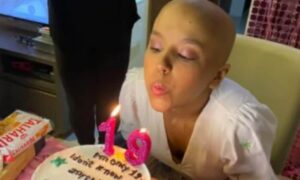A shooting at Florida State University (FSU) in Tallahassee on the early afternoon of April 17, 2025, left at least one person dead and six others injured, according to local authorities. The attack, which began near the bustling Student Union, sparked widespread panic among students and staff, who were instructed to shelter in place as police neutralized the threat. One suspect is in custody, but the area surrounding the Student Union remained an active crime scene for hours, with ongoing investigations involving multiple agencies, including the FBI. The incident has reignited debates about gun violence in the United States, with students and officials expressing frustration over the recurrence of such attacks in educational institutions.
The tragedy shook the FSU community, still scarred by a 2014 shooting at the Strozier Library. The campus, known for its vibrant student life, was engulfed by sirens and flashing police lights as students recounted terrifying moments. Daniella Streety, an FSU student, described the chaotic scene, with students evacuated in long lines, some with hands raised, and others carried out on stretchers or makeshift chairs for medical attention. The university suspended all activities, including classes and athletic events, through the weekend, urging students to avoid the campus while authorities completed their sweep of the area.
Tallahassee Memorial HealthCare confirmed that six victims were admitted, one in critical condition and the others in serious condition. The hospital’s swift response was highlighted in an official statement, emphasizing their commitment to caring for those affected. Meanwhile, Tallahassee police reported that the campus was secure after the shooter was neutralized but asked students to steer clear of the Student Union to avoid interfering with investigations. Buses were deployed to transport students to the Donald L. Tucker Civic Center, where counseling, medical services, and support were provided.
- Initial timeline of events:
- 11:57 a.m.: A student reports the shooting to police after witnessing the gunman firing.
- 12:00 p.m.: Shots are heard at the Student Union, according to witnesses.
- 1:40 p.m.: FSU cancels all activities for the day and advises students to avoid campus.
- 2:54 p.m.: Tallahassee Memorial HealthCare confirms treatment of six victims.
- 4:30 p.m.: Authorities hold a press conference to provide updates.
Witnesses recount moments of terror
McKenzie Heeter, a junior at FSU, was leaving the Student Union with her food when the nightmare unfolded. She reported seeing a man exit an orange Hummer, dressed in an orange T-shirt and khaki shorts, pull out a rifle, and fire in her direction. Heeter described the shooter as a “normal college dude” who, after missing his initial targets, returned to his vehicle to retrieve a pistol. He then shot a woman in purple scrubs, who did not appear to be a student or faculty member, just a few feet away. “I heard about 15 shots over 20 to 30 seconds. I ran to my apartment as fast as I could,” Heeter said, warning others to stay away from campus.
Another student, Ryan Cedergren, described seeing people running as he tried to make sense of the situation. He was in a nearby building when sirens blared, and his survival instincts kicked in, leading him to take cover. “There were students screaming and running in every direction. It was total chaos,” he said. Cedergren noted the overwhelming police presence, with patrol cars surrounding the campus, and the tension that gripped the area as everyone awaited updates. His experience reflects the widespread fear that swept through the university, with many students locked in classrooms, gyms, or locker rooms.
Maya Cabal, an FSU freshman, had just started her shift at the campus gym when she heard the active threat code over the staff’s walkie-talkies. She and others were quickly ushered into the locker rooms, where they remained until buses transported them to the civic center. Cabal expressed outrage at the frequency of shootings in the U.S., calling the situation “unacceptable.” “No one should go to school thinking it’s a normal day and end up with their life at risk because there aren’t enough regulations,” she said. Her words resonate with many young Americans who have grown up in a country where such incidents are tragically common.
Authorities’ response and immediate impact
Tallahassee police acted swiftly to contain the threat, apprehending a suspect shortly after the shooting began. In a social media post, the department confirmed the campus was secure but noted that the Student Union remained an active crime scene. Multiple law enforcement agencies, including the FBI, were mobilized to assist with the investigation. The FBI, which operates a small office in Tallahassee under its Jacksonville field office, sent agents to the scene, while Director Kash Patel stated the agency would provide full support to local authorities.
The university issued multiple alerts urging students to remain sheltered until police cleared the campus. In a statement, FSU announced that residence halls were accessible, but students were asked to avoid the Student Union and refrain from retrieving personal belongings in the area. The Donald L. Tucker Civic Center was transformed into a support hub, offering mental health services, medical care, and information for students. The university also provided emergency contact numbers, including the FSU Police Department, for those needing immediate assistance.
- Measures taken by FSU:
- Cancellation of classes and events through Sunday.
- Restriction of access to the Student Union and surrounding areas.
- Provision of buses for safe evacuation.
- Counseling and support services at the Donald L. Tucker Civic Center.
I am a current student at Florida State University. This is the video I took while being escorted out by police. I was in class when the shooting started, in the building next to where the sh**ters were. pic.twitter.com/TfuRbp2301
— Holden Mamula (@ignqiny) April 17, 2025
Context of gun violence in the U.S.
The FSU shooting is not an isolated event. In 2014, the campus experienced a shooting at the Strozier Library, where an alumnus injured three people before being killed by police. While less deadly, that incident left lasting scars on the FSU community, which now faces fresh trauma. Matthew Ontari, a sophomore, was in a building near the Student Union when shots rang out. He sheltered in place for about an hour before being evacuated. “It’s insane that guns are so easy to get here, while other countries make it much harder,” Ontari said, comparing the U.S. to nations with stricter gun laws.
The tragedy also evoked memories of the 2018 Parkland shooting, which claimed 17 lives, including 14-year-old Jaime Guttenberg. Fred Guttenberg, Jaime’s father, posted on social media, lamenting the latest attack. He noted that some Parkland survivors are current FSU students, making the incident particularly painful. “All I wanted after Parkland was to help keep our kids safe. Sadly, because so many refuse to act on gun violence, I’m not surprised by today,” Guttenberg wrote.
State officials also responded. Florida Governor Ron DeSantis expressed solidarity with the “FSU family” and confirmed that state law enforcement was actively involved. Florida House Speaker Danny Perez called the shooting “terrifying” and “every parent’s worst nightmare.” Attorney General James Uthmeier said his office was monitoring the situation, while the Florida Department of Law Enforcement was engaged in the response. Details about the shooter or their motives remain limited, but authorities promised updates during a late-afternoon press conference.
National reactions and support measures
President Donald Trump, when questioned by reporters in the Oval Office, described the shooting as “a horrible thing.” He said he was fully briefed and would provide further comments later. His brief response underscores the complexity of the gun violence debate in the U.S., where incidents like FSU’s fuel polarized discussions on gun control, school safety, and public policy. For now, the focus remains on ensuring student safety and supporting victims and their families.
Social media videos captured the extent of the chaos on campus. Footage shows officers tending to the injured near the Student Union, while other clips depict classroom evacuations and ambulances in motion. In one striking scene, officers are seen carrying an injured person outside the Strozier Library as students run past. These widely shared images amplified national concern and underscored the severity of the incident.
- Support services offered:
- Counseling at the Donald L. Tucker Civic Center.
- Medical care at Tallahassee Memorial HealthCare.
- Emergency hotlines through FSU and Tallahassee police.
- Transportation for safe student evacuation.
Impact on the university community
The shooting has left deep wounds in the FSU community, which now faces the challenge of recovering from another act of violence. The suspension of classes and athletic events reflects the incident’s severity, with the university prioritizing the safety and well-being of students and staff. The Student Union, typically a lively hub, has become a symbol of tragedy, with restricted access and ongoing investigations. Students like Daniella Streety, who witnessed the evacuation of the injured, described a sense of helplessness as peers were carried away on stretchers or improvised chairs.
FSU has taken steps to support students emotionally. Beyond services at the Donald L. Tucker Civic Center, the university encouraged students to seek help through emergency lines and counseling teams. Faculty members who sheltered with students, as Streety reported, demonstrate the collective effort to protect the community during the crisis. However, the trauma from the shooting will likely take weeks, if not months, to process for those who experienced it.
The outrage of students like Maya Cabal and Matthew Ontari reflects broader frustration with the lack of action to prevent gun violence. Cabal emphasized the need for stricter policies, while Ontari questioned why the U.S. remains an outlier in gun accessibility. These voices, amplified by the incident, highlight the urgency of a national conversation that moves beyond condolences and promises of support.
History of violence on campus
FSU previously faced a shooting in November 2014, when an alumnus opened fire at the Strozier Library, injuring an employee and two students before being killed by police. Though less deadly than the 2025 attack, the 2014 incident heightened campus security protocols. However, the latest shooting exposes the limitations of these measures in addressing a systemic issue that extends beyond the university.
The 2025 attack occurs amid a rise in gun incidents at educational institutions. Data from the Gun Violence Archive indicates that, as of April 2025, over 120 shootings at schools and universities have been recorded in the U.S., disproportionately affecting student communities. FSU, with its 40,000-plus students, is a microcosm of this issue, where academic routines are often disrupted by preventable tragedies.
- Facts about campus gun violence:
- Over 120 school and university shootings in the U.S. in 2025.
- The 2014 FSU shooting injured three and resulted in the shooter’s death.
- Universities have invested in active threat training, but incidents persist.
Recovery efforts and next steps
FSU announced that normal operations will remain suspended through Sunday, allowing time for authorities to complete investigations and for the community to begin processing the trauma. Essential employees were instructed to consult supervisors, while others were advised to stay home. The university reiterated the importance of avoiding the Student Union, which remains under police control, and pledged regular updates as more information becomes available.
Tallahassee Memorial HealthCare, still treating victims, emphasized its readiness for mass emergencies. Collaboration with local authorities ensured prompt care for the injured. Meanwhile, the FBI and other agencies are probing the incident, focusing on the attack’s circumstances and the shooter’s motives. The late-afternoon press conference on April 17 is expected to provide further clarity.
The FSU community’s response, though marked by grief, also showed resilience. Students like McKenzie Heeter, who warned others of the danger, and staff who protected students during the lockdown, exemplify the solidarity that emerges in crises. Still, recovery will be a long process, with the university tasked with restoring a sense of safety on campus.

A shooting at Florida State University (FSU) in Tallahassee on the early afternoon of April 17, 2025, left at least one person dead and six others injured, according to local authorities. The attack, which began near the bustling Student Union, sparked widespread panic among students and staff, who were instructed to shelter in place as police neutralized the threat. One suspect is in custody, but the area surrounding the Student Union remained an active crime scene for hours, with ongoing investigations involving multiple agencies, including the FBI. The incident has reignited debates about gun violence in the United States, with students and officials expressing frustration over the recurrence of such attacks in educational institutions.
The tragedy shook the FSU community, still scarred by a 2014 shooting at the Strozier Library. The campus, known for its vibrant student life, was engulfed by sirens and flashing police lights as students recounted terrifying moments. Daniella Streety, an FSU student, described the chaotic scene, with students evacuated in long lines, some with hands raised, and others carried out on stretchers or makeshift chairs for medical attention. The university suspended all activities, including classes and athletic events, through the weekend, urging students to avoid the campus while authorities completed their sweep of the area.
Tallahassee Memorial HealthCare confirmed that six victims were admitted, one in critical condition and the others in serious condition. The hospital’s swift response was highlighted in an official statement, emphasizing their commitment to caring for those affected. Meanwhile, Tallahassee police reported that the campus was secure after the shooter was neutralized but asked students to steer clear of the Student Union to avoid interfering with investigations. Buses were deployed to transport students to the Donald L. Tucker Civic Center, where counseling, medical services, and support were provided.
- Initial timeline of events:
- 11:57 a.m.: A student reports the shooting to police after witnessing the gunman firing.
- 12:00 p.m.: Shots are heard at the Student Union, according to witnesses.
- 1:40 p.m.: FSU cancels all activities for the day and advises students to avoid campus.
- 2:54 p.m.: Tallahassee Memorial HealthCare confirms treatment of six victims.
- 4:30 p.m.: Authorities hold a press conference to provide updates.
Witnesses recount moments of terror
McKenzie Heeter, a junior at FSU, was leaving the Student Union with her food when the nightmare unfolded. She reported seeing a man exit an orange Hummer, dressed in an orange T-shirt and khaki shorts, pull out a rifle, and fire in her direction. Heeter described the shooter as a “normal college dude” who, after missing his initial targets, returned to his vehicle to retrieve a pistol. He then shot a woman in purple scrubs, who did not appear to be a student or faculty member, just a few feet away. “I heard about 15 shots over 20 to 30 seconds. I ran to my apartment as fast as I could,” Heeter said, warning others to stay away from campus.
Another student, Ryan Cedergren, described seeing people running as he tried to make sense of the situation. He was in a nearby building when sirens blared, and his survival instincts kicked in, leading him to take cover. “There were students screaming and running in every direction. It was total chaos,” he said. Cedergren noted the overwhelming police presence, with patrol cars surrounding the campus, and the tension that gripped the area as everyone awaited updates. His experience reflects the widespread fear that swept through the university, with many students locked in classrooms, gyms, or locker rooms.
Maya Cabal, an FSU freshman, had just started her shift at the campus gym when she heard the active threat code over the staff’s walkie-talkies. She and others were quickly ushered into the locker rooms, where they remained until buses transported them to the civic center. Cabal expressed outrage at the frequency of shootings in the U.S., calling the situation “unacceptable.” “No one should go to school thinking it’s a normal day and end up with their life at risk because there aren’t enough regulations,” she said. Her words resonate with many young Americans who have grown up in a country where such incidents are tragically common.
Authorities’ response and immediate impact
Tallahassee police acted swiftly to contain the threat, apprehending a suspect shortly after the shooting began. In a social media post, the department confirmed the campus was secure but noted that the Student Union remained an active crime scene. Multiple law enforcement agencies, including the FBI, were mobilized to assist with the investigation. The FBI, which operates a small office in Tallahassee under its Jacksonville field office, sent agents to the scene, while Director Kash Patel stated the agency would provide full support to local authorities.
The university issued multiple alerts urging students to remain sheltered until police cleared the campus. In a statement, FSU announced that residence halls were accessible, but students were asked to avoid the Student Union and refrain from retrieving personal belongings in the area. The Donald L. Tucker Civic Center was transformed into a support hub, offering mental health services, medical care, and information for students. The university also provided emergency contact numbers, including the FSU Police Department, for those needing immediate assistance.
- Measures taken by FSU:
- Cancellation of classes and events through Sunday.
- Restriction of access to the Student Union and surrounding areas.
- Provision of buses for safe evacuation.
- Counseling and support services at the Donald L. Tucker Civic Center.
I am a current student at Florida State University. This is the video I took while being escorted out by police. I was in class when the shooting started, in the building next to where the sh**ters were. pic.twitter.com/TfuRbp2301
— Holden Mamula (@ignqiny) April 17, 2025
Context of gun violence in the U.S.
The FSU shooting is not an isolated event. In 2014, the campus experienced a shooting at the Strozier Library, where an alumnus injured three people before being killed by police. While less deadly, that incident left lasting scars on the FSU community, which now faces fresh trauma. Matthew Ontari, a sophomore, was in a building near the Student Union when shots rang out. He sheltered in place for about an hour before being evacuated. “It’s insane that guns are so easy to get here, while other countries make it much harder,” Ontari said, comparing the U.S. to nations with stricter gun laws.
The tragedy also evoked memories of the 2018 Parkland shooting, which claimed 17 lives, including 14-year-old Jaime Guttenberg. Fred Guttenberg, Jaime’s father, posted on social media, lamenting the latest attack. He noted that some Parkland survivors are current FSU students, making the incident particularly painful. “All I wanted after Parkland was to help keep our kids safe. Sadly, because so many refuse to act on gun violence, I’m not surprised by today,” Guttenberg wrote.
State officials also responded. Florida Governor Ron DeSantis expressed solidarity with the “FSU family” and confirmed that state law enforcement was actively involved. Florida House Speaker Danny Perez called the shooting “terrifying” and “every parent’s worst nightmare.” Attorney General James Uthmeier said his office was monitoring the situation, while the Florida Department of Law Enforcement was engaged in the response. Details about the shooter or their motives remain limited, but authorities promised updates during a late-afternoon press conference.
National reactions and support measures
President Donald Trump, when questioned by reporters in the Oval Office, described the shooting as “a horrible thing.” He said he was fully briefed and would provide further comments later. His brief response underscores the complexity of the gun violence debate in the U.S., where incidents like FSU’s fuel polarized discussions on gun control, school safety, and public policy. For now, the focus remains on ensuring student safety and supporting victims and their families.
Social media videos captured the extent of the chaos on campus. Footage shows officers tending to the injured near the Student Union, while other clips depict classroom evacuations and ambulances in motion. In one striking scene, officers are seen carrying an injured person outside the Strozier Library as students run past. These widely shared images amplified national concern and underscored the severity of the incident.
- Support services offered:
- Counseling at the Donald L. Tucker Civic Center.
- Medical care at Tallahassee Memorial HealthCare.
- Emergency hotlines through FSU and Tallahassee police.
- Transportation for safe student evacuation.
Impact on the university community
The shooting has left deep wounds in the FSU community, which now faces the challenge of recovering from another act of violence. The suspension of classes and athletic events reflects the incident’s severity, with the university prioritizing the safety and well-being of students and staff. The Student Union, typically a lively hub, has become a symbol of tragedy, with restricted access and ongoing investigations. Students like Daniella Streety, who witnessed the evacuation of the injured, described a sense of helplessness as peers were carried away on stretchers or improvised chairs.
FSU has taken steps to support students emotionally. Beyond services at the Donald L. Tucker Civic Center, the university encouraged students to seek help through emergency lines and counseling teams. Faculty members who sheltered with students, as Streety reported, demonstrate the collective effort to protect the community during the crisis. However, the trauma from the shooting will likely take weeks, if not months, to process for those who experienced it.
The outrage of students like Maya Cabal and Matthew Ontari reflects broader frustration with the lack of action to prevent gun violence. Cabal emphasized the need for stricter policies, while Ontari questioned why the U.S. remains an outlier in gun accessibility. These voices, amplified by the incident, highlight the urgency of a national conversation that moves beyond condolences and promises of support.
History of violence on campus
FSU previously faced a shooting in November 2014, when an alumnus opened fire at the Strozier Library, injuring an employee and two students before being killed by police. Though less deadly than the 2025 attack, the 2014 incident heightened campus security protocols. However, the latest shooting exposes the limitations of these measures in addressing a systemic issue that extends beyond the university.
The 2025 attack occurs amid a rise in gun incidents at educational institutions. Data from the Gun Violence Archive indicates that, as of April 2025, over 120 shootings at schools and universities have been recorded in the U.S., disproportionately affecting student communities. FSU, with its 40,000-plus students, is a microcosm of this issue, where academic routines are often disrupted by preventable tragedies.
- Facts about campus gun violence:
- Over 120 school and university shootings in the U.S. in 2025.
- The 2014 FSU shooting injured three and resulted in the shooter’s death.
- Universities have invested in active threat training, but incidents persist.
Recovery efforts and next steps
FSU announced that normal operations will remain suspended through Sunday, allowing time for authorities to complete investigations and for the community to begin processing the trauma. Essential employees were instructed to consult supervisors, while others were advised to stay home. The university reiterated the importance of avoiding the Student Union, which remains under police control, and pledged regular updates as more information becomes available.
Tallahassee Memorial HealthCare, still treating victims, emphasized its readiness for mass emergencies. Collaboration with local authorities ensured prompt care for the injured. Meanwhile, the FBI and other agencies are probing the incident, focusing on the attack’s circumstances and the shooter’s motives. The late-afternoon press conference on April 17 is expected to provide further clarity.
The FSU community’s response, though marked by grief, also showed resilience. Students like McKenzie Heeter, who warned others of the danger, and staff who protected students during the lockdown, exemplify the solidarity that emerges in crises. Still, recovery will be a long process, with the university tasked with restoring a sense of safety on campus.







